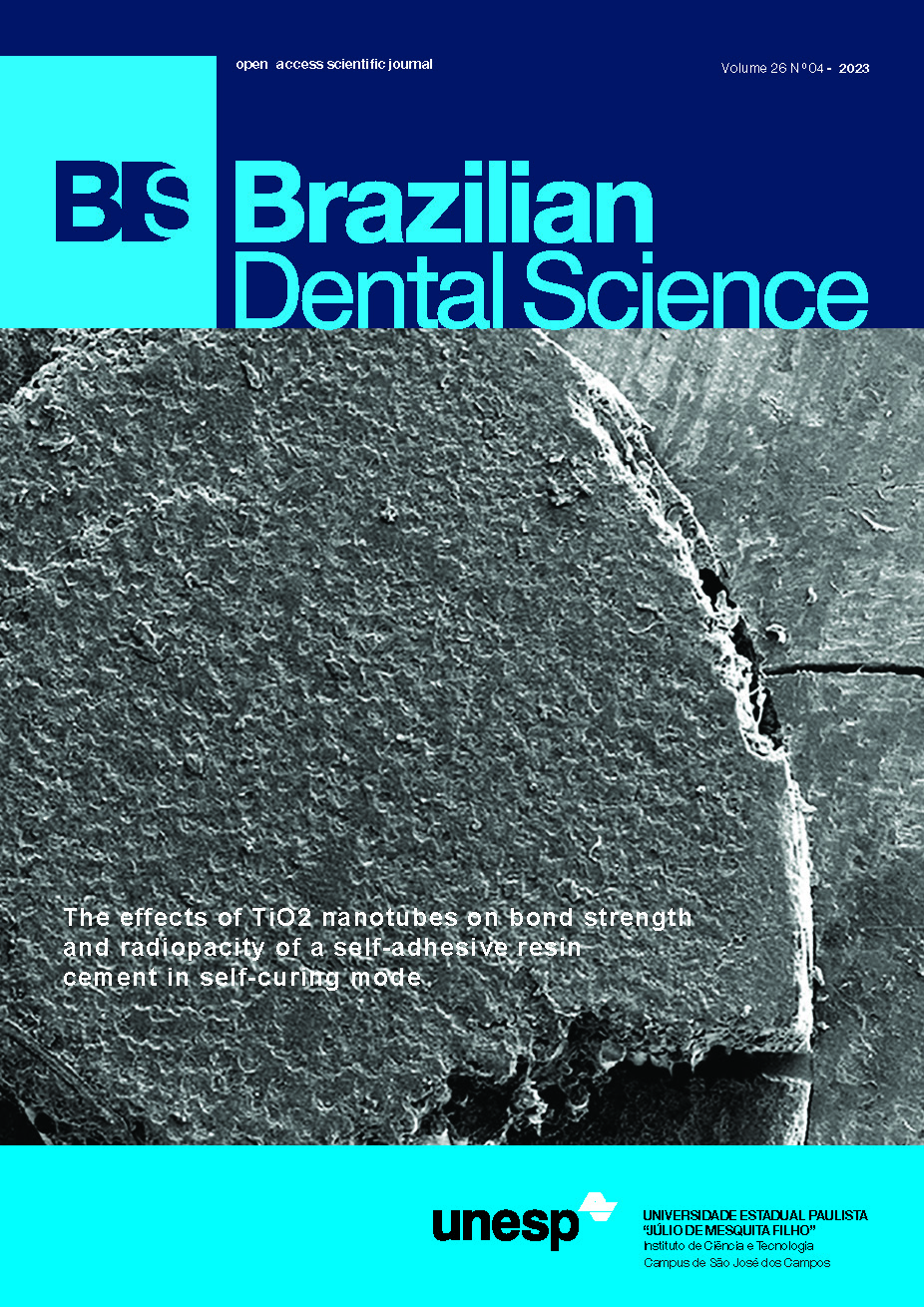Dental caries of stunting and underweight toddlers aged 3-5 years old among Pandhalungan community
DOI:
https://doi.org/10.4322/bds.2023.e3833Abstract
Objective: Toddler dental caries can interfere with children’s nutritional conditions, toddlers have difficulty eating and disturbing sleep rhythms, where growth hormones work optimally when toddlers sleep. The study aims to identify and analyse the difference between dental caries of stunting and underweight toddlers aged 3-5 years old among Pandhalungan community. Material and Methods: An analitical observational study with a cross-sectional approach was performed in Panduman village, Tegalbesar, Jember. The population was 530 stunting toddlers and 162 underweight toddlers. The sample was 114 stunting toddlers and 114 underweight toddlers selected by simple random sampling. The variable was the dental caries of stunting and underweight toddlers. The dental caries was checked by the inspection in the light space. The information of stunting and underweight toddlers was obtained from the public health center data. The data were analysed by descriptive statistical test and continued by Mann-Whitney U test . The majority age of the toddlers was 49-60 months with 73.68% from stunting toddlers and 71.05% from underweight toddlers. Results: The majority of the parents’ recent education was low, which were in junior high school and primary school. The average dental caries of stunting toddlers was 5.07 and 5.67. The test resulted Asymp. Sig. (2-tailed) 0.159 less than a(0,05) that means there was no difference between dental caries of stunting and underweight toddlers. Conclusion: There was no difference between dental caries of stunting and underweight toddlers.
KEYWORDS
Community; Dental caries; Minors; Stunting; Underweight.
Downloads
Published
How to Cite
Issue
Section
License
Brazilian Dental Science uses the Creative Commons (CC-BY 4.0) license, thus preserving the integrity of articles in an open access environment. The journal allows the author to retain publishing rights without restrictions.
=================




























